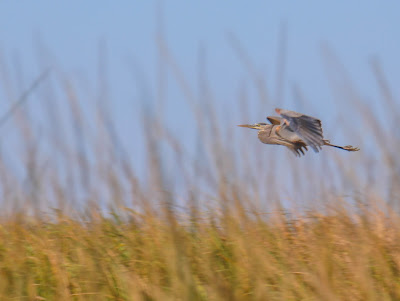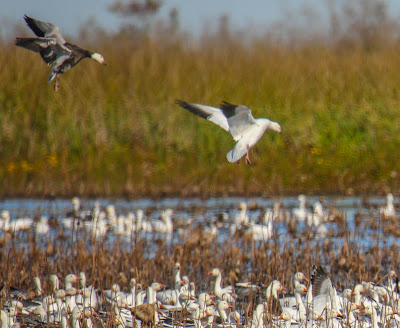Cameron Prairie NWR (the Gibbstown Unit) is located in Cameron Parish, 25 miles southeast of Lake Charles and 30 miles north of the Cameron Ferry, in Louisiana, and accessible from Hwy 27. It is part of what has been dubbed the
Creole Nature Trail, a designated scenic byway known as "Louisiana's Outback" and one of "America's 'Last Great Wildernesses'". It has two separate units: (a) the Gibbstown Unit with 9,621 acres of fresh marsh, coastal prairie and old rice fields, managed to provide food for wintering waterfowl and other water birds; and (b) the East Cove Unit, only accessible by boat, with 14,927 acres of brackish and salt marsh, a nursery for brown and white shrimp, blue crab and many fish species.
The Gibbstown Unit is located just north of Gibbstown. 1,230 acres was farmed for rice and are now managed for moist soil plants that provide food for wildlife. It is a winter home for ducks and geese, including green-winged teal, mallards, northern pintail, ring-necked ducks, snow geese and white-fronted geese. It is a nesting range for fulvous and whistling ducks, white and white-faced ibis, roseate spoonbills and various species of heron and egret. The Pintail Wildlife Drive, which we drove, is two miles south of the visitor center and is a graveled 3 mile one-way auto route. A half mile boardwalk, which we did not do, is near the beginning of the Pintail Wildlife Drive. The visitor center, which was not open due to Covid, also has a small boardwalk, which we did visit.
The East Cove Unit is southwest of the Gibbstown Unit, the west end connecting to the southeast end of Lake Calcasieu, reaching as far west as just north of Cameron and almost to Hwy 27 to the east. The marshes of this unit have 19 miles of levee on Calcasieu Lake which are managed to preserve a balance between salt and fresh water and is part of the largest marsh restoration project in the U.S.
 |
| This large turtle was found in the pond next to the visitor center. I initially thought it was a false map turtle, but based on the website now believe it may be a red-eared slider. |
 |
| Signs indicating the Pintail Wildlife Drive. |
 |
| This is representative of habitat along the Pintail Wildlife Drive. |
 |
| By far the biggest presence when we visited, over Thanksgiving Week in 2021, was snow geese. They were feeding in large flocks and honking away. We could not get very close, but I got a few decent shots of them flying-in. |
 |
| I've read that blue morph snow geese are more common in the east than in the west. This visit confirmed it. I saw numerous blue morphs, like those above, where they are very rare at the Sonny Bono Salton Sea NWR in southeastern California. |
 |
| There were warnings of alligators... |
 |
| ...and we saw one just off a small canal near the road. |
 |
| There were also turtles along the bank of the canal, I think they may be river cooters. |
 |
| This turtle slipped into the water. |
 |
| Double-crested cormorant |
 |
| Neotropic cormorants |
 |
| Great blue heron |
 |
| Laughing gull |
 |
| Bald eagle along the side of the road. |
This is a place I would love to go back to, both to get more breadth in different areas of the two units and to see more of it in winter and other times of the year.
























I can't believe we saw a bald eagle and didn't realize that was what it was! I love your photos of it, as well as the one of the great blue heron in flight. They are so huge. It's amazing to me that they can fly.
ReplyDelete